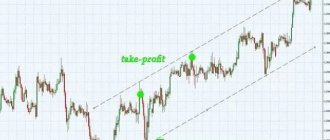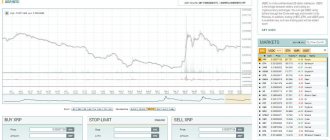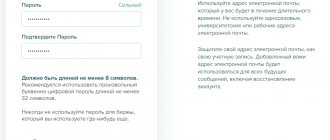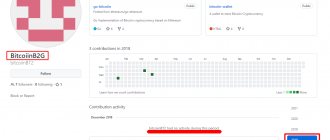What is a mutual fund? What does the rating of mutual funds look like? What does buying an investment share give?
If you have ever read or at least leafed through articles on the topic of passive income, you have probably come across the abbreviation “PIF”. A mutual fund is a mutual investment fund based on the trust management of investors' money.
Any citizen who has the money to purchase one investment share has the right to become a member of the fund. This document gives him the right to receive profits in the future when the value of his share increases.
I, Denis Kuderin, an investment expert, will tell you in detail in a new publication about how mutual funds work and how to invest in mutual funds
The most patient readers will receive a review of profitable mutual funds and reliable management companies with the most favorable terms of cooperation, as well as tips on how not to lose money when investing.
So, go ahead!
What is a mutual fund
Investment funds are organizations with shared ownership that aim to preserve and increase the assets of participants. This is a form of collective investment that allows everyone to earn money on effective financial instruments.
Why do private individuals need to give money to some fund? Why not invest directly, independently and without intermediaries? The reason is that not every person has the skills to invest competently.
The level of financial literacy of the average citizen of the Russian Federation is close to zero. Even if he has savings, he often has no idea what to do with them.
The most creativity can do is put money into a bank deposit. But you yourself know that the profitability of such a deposit does not always cover inflation.
Keeping money at home means losing 5-10% per year of its value, or even more. The cost of goods and services increases almost monthly. At the same time, not everyone’s salaries are growing. What should I do?
Give money to those who know how to use it wisely and ultimately receive a profit that exceeds both inflation and interest on bank deposits. The assets of depositors are managed by the management company. It consists of professional financiers who are aware of which areas of investment will give maximum profit in the current economic situation.
It is more profitable to invest money in funds for another reason: the larger the capital, the more income it brings. In mutual funds, deposits are placed in a common pot and managed as one asset. This is much more profitable than operating with single deposits.
A mutual investment fund is a property complex based on the trust management of assets with the aim of increasing their value.
Each owner of an investment share has the right to part of the mutual fund’s property and repayment of his share. That is, he has the right to sell his share at the current price and withdraw money from the fund.
The management company undertakes to manage the assets of investors - to invest them in order to multiply them. The choice of investment instruments depends on the type of fund. The investor has the right to choose a mutual fund based on his personal preferences.
The funds work with stocks, bonds, precious metals, money markets, startups and other areas. For their work, management companies receive remuneration in the form of a fixed amount or a percentage of income.
Let me explain with an example
You and three of your friends have decided to buy a young apple tree from the owner of an orchard, so that in a few years, when the tree begins to bear fruit, you can enjoy the delicious fruits, rather than buying apples at the market. This tree is your investment fund.
The owner of the garden will take care of the apple tree and receive several kilograms of fruit from each harvest. You and your friends will fairly divide the rest of the apples among you.
The owner of the garden (management company) is interested in ensuring that the tree grows healthy and produces a generous harvest. Therefore, he takes care of the apple tree, fertilizes the soil around it, protects it from pests, and waters it.
When you want oranges instead of apples, you will sell your share to friends or the owner of the orchard and buy an orange tree. Perhaps in another garden - that is, in another mutual fund.
The first mutual funds appeared in the United States in 1924, but investing in funds managed by professional managers reached a real boom in the 50s.
In Russia, mutual funds appeared at the dawn of the emergence of a market economy in the 1990s. Now there are hundreds of independent funds and the same number of management companies in the country. The activities of mutual funds are strictly regulated by law and government agencies.
Let's list all the advantages of mutual funds:
- a huge selection of investment instruments and directions;
- control at the federal level;
- higher income compared to bank deposits;
- relatively low risks;
- professional asset management;
- transparent structure of the organization;
- current financial transactions of funds are not subject to tax;
- low entry threshold - in some funds, shares cost from 1000 rubles;
- At any time, the shareholder has the right to sell his share and withdraw the money.
There are also disadvantages. The risk, although low, is still there. If you make a mistake in choosing a mutual fund, you will not receive any income. At the same time, the management company will still take money for its work.
Although the activities are controlled by the state, there are no legal requirements regarding the profitability of the funds.
Another way of jointly owning property is a credit consumer cooperative.
Total
- A mutual fund is where you and other investors hand over your savings to a management company to invest in different types of assets.
- There are three types of mutual funds, differing in terms of maturity: open mutual fund, individual mutual fund, closed mutual fund, and two that are traded on the stock exchange: ETF, BPIF.
- A commission is paid for managing a mutual fund, regardless of the investment result - up to 3% of the average annual net asset value.
- Most often, mutual funds are purchased online or at a sales office.
- Income is distributed among shareholders in proportion to the number of shares.
- If you buy and hold shares for more than three years, you are entitled to an investment tax deduction.
- The deposit insurance system does not apply to mutual funds, but shareholders feel quite protected, since their funds are managed by a team of professionals, and the Bank of Russia controls the activities of market participants.
#Investments #Mutual Fund #For Beginners
What are the types of mutual funds - an overview of the TOP 3 types
There are several classifications of mutual funds.
They are divided by type of management, availability of deposits, and area of activity.
All mutual funds operate according to the same scheme:
- Participants contribute their share to the common pot - they buy shares according to their available funds.
- The management company (MC) invests money in promising investment projects.
- Profit from turnover is distributed among shareholders.
Funds can be open, closed and integrated. Decide right away which structure suits you best.
Type 1. Open-end mutual fund
Open-end funds practice free sale and purchase of investment shares. You can become a member of the fund at any time if you have the desire and resources. The number of shareholders is not limited in any way. Such structures invest their assets in highly liquid and reliable instruments.
Type 2. Closed mutual fund
Closed-end funds are designed for strictly defined periods. Shares are sold to participants immediately after the opening of the mutual fund, after which sales cease. You cannot withdraw funds before the end of the investment period, but you can sell shares to other participants.
Closed mutual funds usually specialize in a specific area of investment. For example, they invest money only in real estate (often at the construction stage) or in innovative projects.
Sometimes it is a kind of private club created for specific projects. The cost of shares in such funds often amounts to millions of rubles, so only wealthy investors become shareholders.
Type 3. Interval mutual fund
Interval funds sell and redeem investment units strictly within certain periods. This happens at least once a year. Such organizations work mainly with securities - they trade professionally on stock exchanges.
By area of investment, mutual funds are divided into:
- equity funds;
- bonds;
- real estate;
- money market;
- credit;
- index.
The most popular type is securities funds.
The table shows the main criteria for distinguishing between open-ended, closed-end and interval-type funds:
| № | Funds | Availability of unit management | Investment directions |
| 1 | Open | Investment units are on free sale and available for redemption at any time | Highly liquid and reliable instruments - stocks, bonds, energy |
| 2 | Closed | Units are sold only at the time the fund is opened, redemption is only after a predetermined period | Assets are invested in specific projects (real estate, business) |
| 3 | Interval | Units are sold and redeemed periodically | Main instrument – shares |
Read other articles about passive income - “Freelancing” and “Catering”.
Pitfalls and other hidden points
To all of the above, you can additionally add a couple of hidden points.
Purchase of “own” assets. This usually applies to bond funds. The bank issues debt securities. And the management company, working in conjunction with the bank, invests investors’ money in these “its” bonds. Even if it is not spelled out in the management strategy.
Everyone benefits (except the final shareholders). The bank successfully placed the securities. The management company received a certain bonus for purchasing the assets “needed” by the bank.
Advertising brochures. Offices like to show various pictures (graphs and profitability indicators) in brochures. They have approximately the same meaning. When investing in a mutual fund (fund name) on such and such a date of the year until …….., a profit of 50 (100, 200%) was received.
Everything is simple here. A favorable period is selected during which the fund showed maximum profitability (a year or two, or even just a few months). And this information is “fed” to clients. Look at the opportunities and profits. Everything is good and wonderful with us.
No full disclosure. Clients almost never know where the fund actually invests money. The management company provides information once a quarter. The rest of the time, for ordinary shareholders, everything is shrouded in secrecy.
How to invest in mutual funds - step-by-step instructions for beginners
Every investor should first decide on the purpose of investment. Decide for yourself what kind of income you need - fast, stable, reliable, as high as possible? Only then choose a fund. And remember - the higher the income, the higher the risks.
Decide on the timing of the investment and the amount of assets. Mutual funds do not guarantee a fixed annual profit; they are not banks. Success depends on many variables - market conditions, professionalism of the management company, economic situation.
If you have already solved all the preliminary questions, proceed to investing. Here's a step-by-step guide.
Step 1. Select a management company
Managers will take care of all the management of assets and making a profit. Professional companies rarely engage in direct deception of investors. The law prohibits such structures from making unreasonable promises to investors.
Each company usually has several mutual funds. Diversification - the distribution of funds in different areas - reduces risks and allows you to use different investment strategies.
When choosing a management company, pay attention to the following parameters:
- number of funds under management – the more, the better;
- commission size;
- total profitability;
- management policy - choose companies that combine high-risk and conservative instruments;
- time on the market;
- company rating in reputable agencies (“AAA” is the highest indicator in the National Rating Agency, “A+++” is the maximum reliability in RA Expert).
Also take a closer look at how profits are distributed. If a company is too generous in rewarding investors, it may be that it is less interested in making a profit than in attracting new participants.
In such organizations, income is generated not from promising investments, but from a constant influx of money. What does it look like? That's right - a financial pyramid. Stay away from such companies.
Step 2. Open a bank account
Money is transferred to the fund through a bank account. The company will transfer funds to the same account when you decide to repay your investment share.
When choosing a bank, pay attention to the percentage that the institution takes for financial transactions to the account of the management company. The smaller it is, the better, of course.
And the best option is when the management company and the bank are part of the same financial group (for example: Alfa Capital Management Company - Alfa Bank). In this case, you will not be charged any money for the transfer.
Step 3. Fill out an application for multiple purchases of shares
The next stage is a visit to the management company with a passport and mutual fund details. Submit an application for the regular purchase of investment shares and become a full participant in the fund. If you are doing this for the first time, you need to fill out a registration form.
An agreement is concluded between the investor and the management company. I think there is no need to remind you that before signing any official documents, you need to carefully read them inside and out.
Step 4. Transfer money to the management company account
All that remains is to transfer the money to the management company’s account. Indicate the application number, date, your last name and initials in the payment purpose.
Each fund has its own minimum amount. In mutual funds aimed at private investors, this is 3-5 thousand rubles. There are organizations where the minimum contributions are 100,000 and above.
Step 5. We receive a notification about the transfer of shares to the investment account
During a personal visit, you will receive a notification about the receipt of funds in your investment account in 5-7 days. If this document arrives by mail, you will have to wait 10-14 days, depending on the efficiency of the postal service.
Do you want to purchase shares without leaving your home? There is such a possibility. You need to fill out an application online and wait for the company’s response. They will send you instructions for opening an account and help you complete the registration procedure.
Read about another passive way to earn money in the article “Vending”.
Rating of mutual funds with favorable terms of cooperation - review of the TOP 3 popular ones
Let's move on to a review of the most promising companies and funds under their management.
Compare, choose, purchase investment units.
1) Uralsib
The manager was created in 1996. The group manages mutual funds and non-state pension funds. The total number of shareholders at the time of writing is 52 thousand people. Invests in the most reliable and profitable areas.
Deposit sectors:
- energy;
- Natural resources;
- growth stocks;
- Eurobonds;
- gold;
- global commodity markets.
The cost of a share ranges from 5 to 25 thousand rubles. The shareholder has the right to independently choose the background and determine the direction of investment. The largest mutual fund from the management company today is Uralsib First. Designed for investors focused on long-term asset growth.
2) Opening
Otkritie is a brokerage company engaged in securities, stock exchange operations, and investing. The company's clients who wish to become shareholders of mutual funds have the right to choose funds from the most promising investment areas. The most popular instruments are stocks, bonds, foreign market funds, stock indices.
The cost of a share in various funds ranges from 900 to 2,500 rubles. Available mutual funds are “Raw Materials”, “Eurobonds”, “Foreign Property”, “Foreign Shares”. Recommended investment periods are from 1 year or more.
3) Gazprombank Asset Management
The manager works with individuals, insurance companies, non-state pension funds, cultural and educational organizations. At the time of writing the article, the company manages 11 open mutual funds, 6 closed and 1 interval. Included in the TOP 3 largest management companies in Russia. Has the highest reliability rating of AAA, assigned by the National Rating Agency.
List of all existing closed-end mutual funds
Market leaders that showed high profitability in 2022 are listed. However, the list of active investment funds is not limited to them. You can find investment offers of varying degrees of attractiveness on the websites of most Russian banks (VTB, Sberbank, Uralsib, AlfaBank, etc.).
| № | Name of mutual fund | Management Company |
| 1 | QBF – Regional Real Estate | QBF Asset Management |
| 2 | Arsagera – Housing | Arsagera |
| 3 | RFC – Shuvalovsky Heights | RFC-Capital |
| 4 | Aruji – real estate fund 1 | VTB Capital |
| 5 | Two capitals | Mercury Capital Trust |
How not to lose money when investing in mutual funds - 5 useful tips
Some tips for novice shareholders.
Follow them, and the risk of losing funds will be significantly reduced.
Tip 1. Monitor the situation on the stock market
You need to buy and sell investment shares on time. The best time to buy mutual funds is after prices fall. Don’t be afraid of temporary price fluctuations: if you want to get the maximum profit, count on long-term investments.
Tip 2. Choose the most reliable mutual funds
If you want to sleep peacefully, choose reliable funds with a conservative investment strategy. Which mutual funds are the most stable? These are bond funds, mixed funds and funds of funds.
The advantage of mutual funds is their information openness. All interested parties have the right to familiarize themselves with data on the size of assets, the current value of the share, and investment operations. Do not neglect the client’s right to information and do not hesitate to ask questions to managers and operators.
Tip 3. Diversify risks
If you want to reduce risks, divide your assets into different mutual funds or even different management companies. If you have a lot of eggs and a lot of baskets, the likelihood of losing your savings will be reduced to a minimum.
Tip 4. Improve your investor skills
Passive income is definitely great. But if you want to earn more, become a qualified investor. Read specialized literature. For example, “Rich Dad's Guide to Investing” by Robert Kiyosaki or “The Intelligent Investor” by Benjamin Graham.
The higher your awareness, the more effective and profitable your investment will be.
Tip 5. Use the unit exchange service
Management companies often give investors the opportunity to exchange investment shares. For example, exchange shares of bond funds for shares of stock funds. If you monitor changes in value, such manipulations will increase profits by 10-15% per year.
Watch an interesting video in which the head of the management company explains the structure of the work of mutual funds.
Yield comparison
But don't be fooled by the high returns. Markets are unstable. And today's profits are not guaranteed in the future. But that's not what we're talking about.
In order to understand how effectively your money is working, you need to compare the result with some standard.
The easiest way to do this is by comparing index mutual funds. All management companies buy shares in the same proportion as they are in the index.
For example, the Sberbank-America mutual fund completely copies the S&P 500 index, which includes the 500 largest US companies.
Comparing the charts with other companies investing in a similar way, an interesting picture emerges.
Over long periods, returns vary greatly.
On the picture:
- Sberbank Mutual Fund - red chart;
- Mutual Fund Raiffeisen - green;
- ETF FXUS ETF - white.
On the X scale - profitability as a percentage since the beginning of 2014.
Total Return is the final return of the funds.
Annual Eq - average annual profit.
The main disadvantage of mutual funds is high hidden commissions











